Persians’ Love Affair With Pomegranate
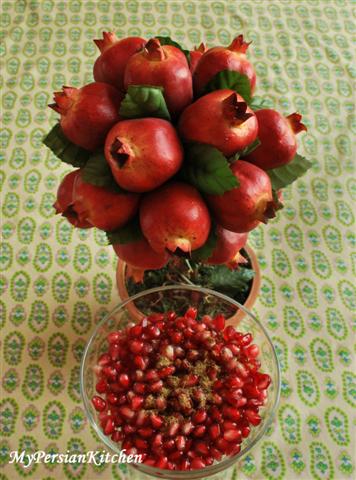
It is safe to say that Persians LOVE Anar, pomegranate. There are no ifs, and, or buts about it. I always looked forward to fall for a couple of reasons when I was a kid. Let’s be clear, going back to school was not necessarily one of them. There were precisely one nice pomegranate tree and three persimmon trees in my grandmother’s property. Fall meant picking pomegranates and persimmons and eating them right off the tree if I chose to! There was something truly magical about seeing the foliage change color while these two types of fruit matured on the trees. The pomegranate would turn into a vibrant red while the persimmons tuned into a deep orange color.
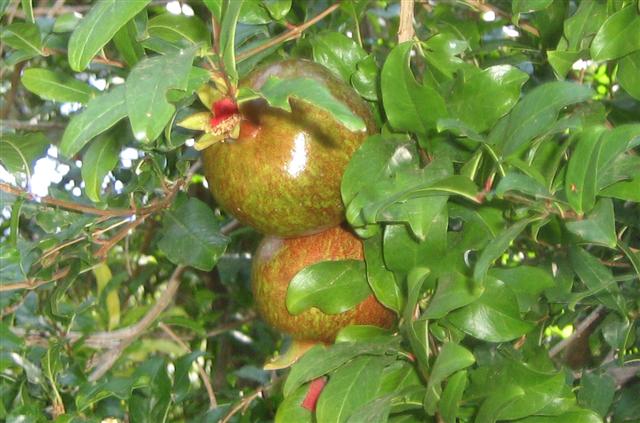
Pomegranate starts small and on the green side.
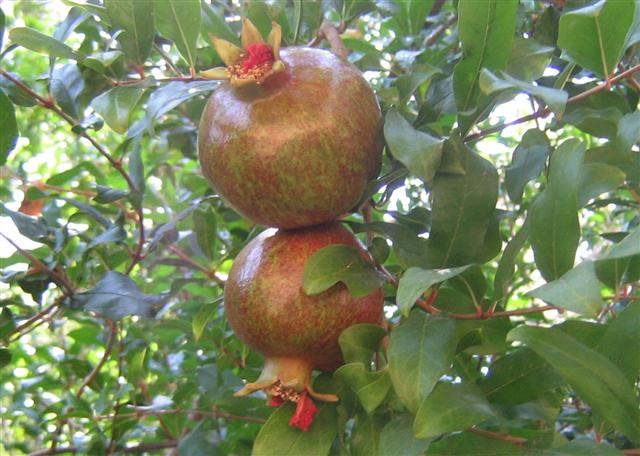
As it matures the color changes into red.

It is ready to be harvested when it turns into a bright red.
Since it is officially fall, even though it was almost 80 degrees around here, I proclaim this week to be “Pomegranate Week.” I have already professed my loved for pomegranate in a previous post when I made Asheh Anar, Pomegranate Soup.
Today’s post is how Persians usually like to eat pomegranate. It is a simple two ingredient recipe…but it can get a little messy!
Ingredients
Pomegranates
Ground Angelica
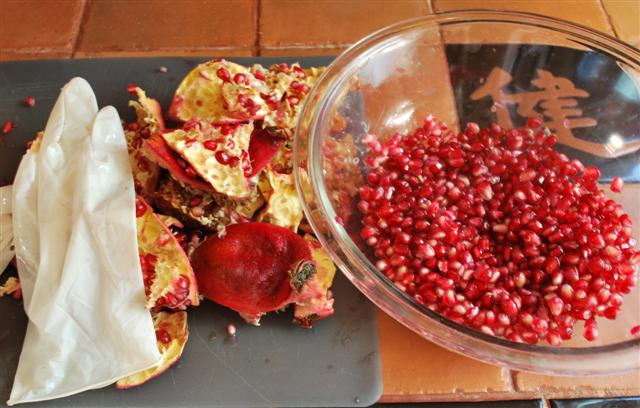
Cut pomegranates in four sections. Removed the seeds and place them in a bowl. I would suggest using gloves for this fun and messy part. Also, you may not want to wear a nice top while doing this….you may live to regret such decision!

Purchase some Ground Angelica.

Place some of the pomegranate seeds in a nice bowl.
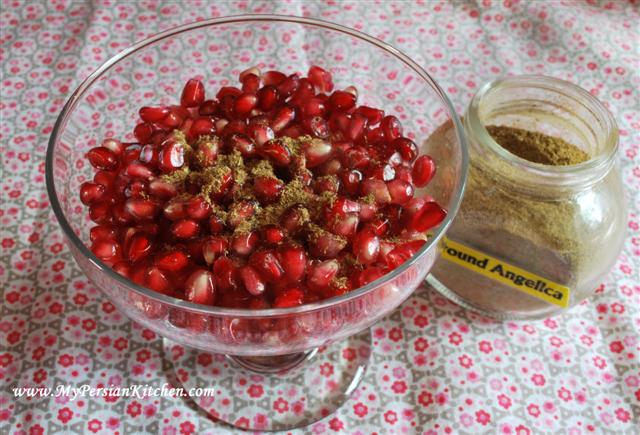
Sprinkle a bit of Ground Angelica on top.
See? It is super easy!
I also want to share with you an article about Pomegranate that was recently forwarded to me by one of the editors at Moment Magazine: The Pomegranate: A Rich and Holy History. I encourage you to read it as it is very fascinating. I quote:
One of the oldest and most beloved fruits known to mankind, the red pomegranate, native to southwestern Asia around the Caspian Sea, has been grown in countries such as Iran, Iraq, Turkey, Armenia and Israel for more than 3,500 years.
Joan Nathan
Please click on the following links for other recipes featured in the “Pomegranate Week” 2009 edition:







October 27, 2009
Love love love pomegranates! Thanks for sharing that interesting article.
October 27, 2009
Bria,
Indeed, pomegranates are a delight!
November 7, 2009
One of Croatian words for pomegranate is ‘nar’ – I see now where it might be coming from!
January 29, 2010
lovely article !
I just started to read your blog, and haven’t seen everything yet.
January 29, 2010
I thought the article was pretty fascinating. I also loved the interview that I posted in the Beet & Pomegranate Salad.
October 13, 2010
We eat Pomegranate with salt. i love Cucumber with salt also.
January 25, 2012
I love this site, I was looking for Ash Anar recipe,
Lovely pictures and article!
April 8, 2013
I love it. I find that if I fill a large bowl with cold water and pull the pomagranate apart while under the water, there is no messy splatter and the job gets done much faster. Also, the seeds sink to the bottom and the white parts float to the top which makes it easy to separate. 🙂
January 24, 2015
The Croatian word is from the Turkish version, nar. Itself a borrowing of anar. Nar in old Turkish also means fire., which makes it a very suitable word for this fruit.